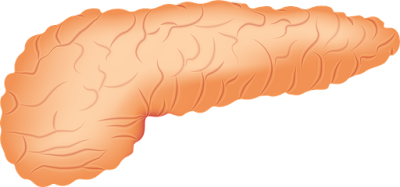Diet for the heart and digestive system
Dietary
fiber is a component of plants (cereals, vegetables and fruits) which is not digested in the gastrointestinal tract. But it has a beneficial effect on our health. First of all, stimulate the digestive system to work - increases the secretion of saliva (and preliminary digestion in the mouth) and the production of gastric acid, improves peristalsis (and thus the frequency of bowel movements). It also reduces the feeling of hunger, because it swells in the stomach and also helps lower cholesterol and blood sugar.
Note! The dose of fiber recommended by the World Health Organization is 20-40 grams per day (higher amount can cause bloating).
Coconut Flour source of fiber
It is a better source of
fiber than vegetables: in 1 tablespoon of almost 10 g !. Because it has a sweet taste, you can significantly reduce the quantity of sugar to be added to baked goods.
Bran source of fiber
It's a real boon for the body. Spoon is a source of 8 grams of
fiber. But it is also true bran nutritional bomb. Having them deliver a mass of vitamins (B, C, E, PP), and minerals (phosphorus, iron, zinc, potassium, manganese, iodine, magnesium) and complex carbohydrates.
Peas source of fiber
Reaching for him once a week because, although the causes bloating, it is a source of amino acids that are processed sugar and fats. 100 g to 15 g of
fiber.
Note! Before cooking, soak the beans in water (does not cause bloating).
Carrot source of fiber
Crunching the raw between meals or when you feel hungry in the evening. 100 g (1 medium carrot) = 11 g
fiber. This vegetable will also preferably for your eyes, skin and the immune system due to a located in the beta-carotene.
Dried fruit source of fiber
Satisfy the desire for a sweet (and easier to opt out of a candy bar or cookies), and at the same time stimulate your intestines to work. 100 g of fruit = 13 g
fiber. The richest in valuable component are: dried plums, peaches, apricots, figs and apples.
Wholemeal bread source of fiber
The study showed that each year reduces the number of pounds of bread eaten by the average Pole in 12 months.
Note! Meanwhile, whole wheat bread, if eaten in moderation (a few slices a day), not only does not make you fat, but it helps to slim down.
1 slice (40 g) to 8 g of
fiber. Full grain is also a great source of energy throughout the day.
Unpeeled almonds source of fiber
Perfect for lunch or afternoon tea. 10 pieces of almond to 3 grams of
fiber, and the dosage of valuable for the nervous system and heart, unsaturated fatty acids, vitamins B and E, magnesium and copper.
Flaxseed source of fiber
Enrich the granola, yogurt or cheese or soup or salad. Best before grind grain (1-2 tablespoons) eg. In a coffee grinder. 1 tablespoon of flaxseed is 13 grams of
fiber. It is also a good source of fatty acids, proteins, and known. plant hormones that protect against cancer.
Chickpeas source of fiber
Otherwise, chickpeas, chickpea, hummus. It is easier to digest than, for example. Beans, but very satisfying. 50 g There are 11 grams of
fiber. As it contains a lot of protein, it can replace meat by adding such. Soup (after overnight soaking in water and cooked).
Artichokes source of fiber
Green leaves perfectly connect with the salad, but you can also eat the same eg. With vinaigrette dressing. 100 g + 11 g of
fiber Artichokes are also a source of cynarin and inulin, which further improve the functioning of the digestive system and metabolism intensify.
Note! Drink plenty of non-carbonated water. Top up to 2 liters a day. Fluids are necessary to ensure that the fiber be able to operate appropriately. Its deficiency can cause this, with this precious ingredient instead of mixed constipation, ... it will cause.



Comments
Post a Comment